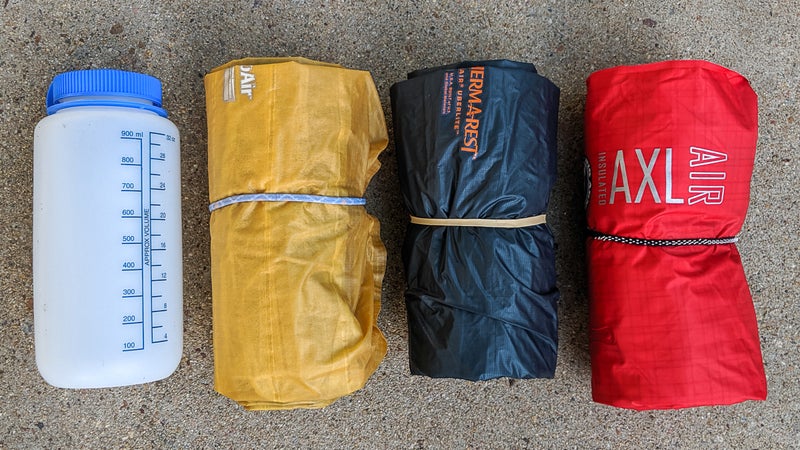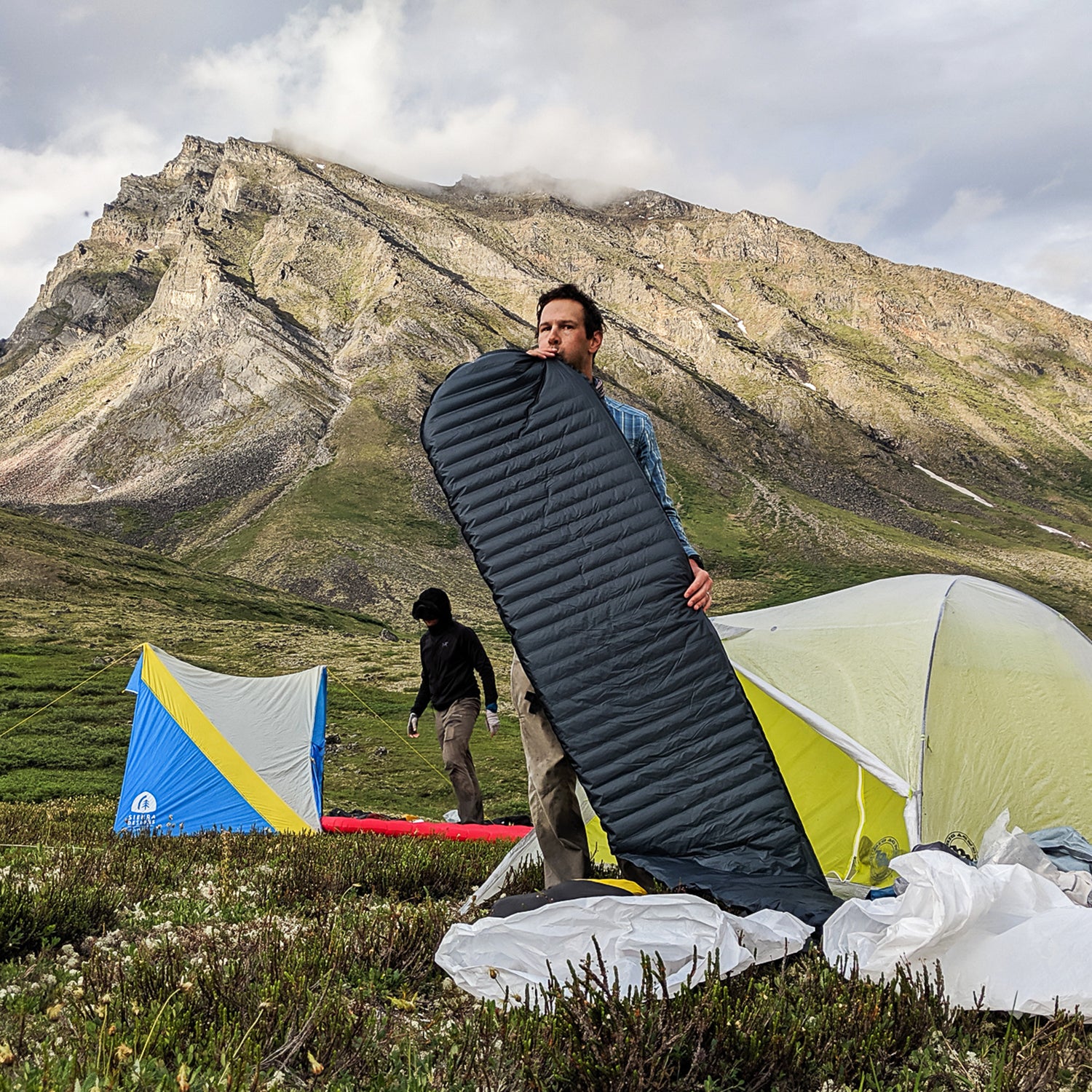In the late 2000s, Therm-a-Rest revolutionized the sleeping pad with the NeoAir XLite, which was lighter, warmer, and more comfortable than the prevailing self-inflating pads of the day. While┬áother brands have since developed competing products,┬áthe XLite has remained dominant among weight-conscious backpackers. But Therm-a-RestÔÇÖs newest offering just might change that dynamic.
This summer I slept on the new ($195, 8.8 ounces) for five weeks in West VirginiaÔÇÖs Appalachians, AlaskaÔÇÖs Brooks Range, and Yosemite National Park. It kept me warm in temperatures down to 30 degrees Fahrenheit, incurred no holes or blown seams, and was acceptably comfortable.
Due to its weight, itÔÇÖs a very attractive option for backpacking in three-season conditions, for which the UberLite provides sufficient insulation.┬á
The UberLite competes most directly with the Big Agnes Insulated AXL Air┬á($180, 10.6 ounces).┬áBetween the two, itÔÇÖs a toss-up: the UberLite is marginally lighter,┬áthe AXL is slightly more comfortable,┬áboth cost about the same, and both push the limits of fabric and construction technologies. Go to the store and test-sleep both; or order both, try them at home, and decide which one you want to keep.
If your pad needs to work beyond three-season conditions, your answer is still the ($185, 12 ounces), which is more durable, costs ten bucks less, and is 60 percent warmer than the UberLite and the Insulated AXL Air. 
UberLite Specs
- Sizes: small, regular, and large
- Weight: 8.8 ounces (250 grams) for regular
- ŞÚ-▒╣▓╣▒˘│▄▒:╠ř2.0
- Materials: 15-denier ripstop nylon on top, and 15-denier nylon on the bottom
- Thickness: 2.5 inches 
- Cost: $180 MSRP for regular
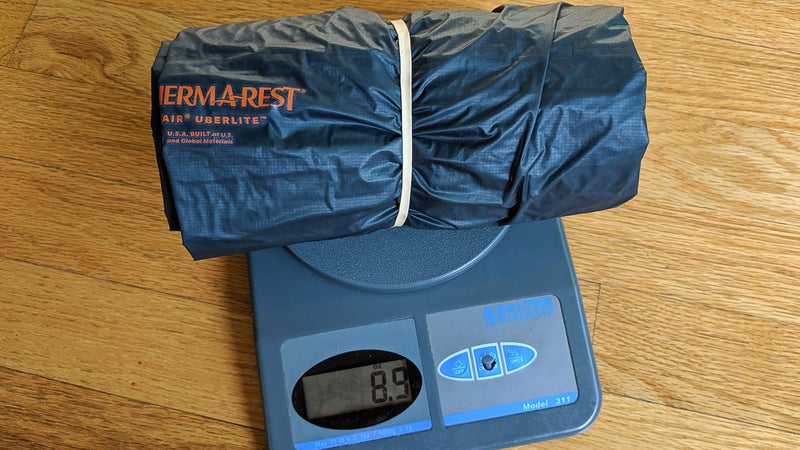
Comfort
If youÔÇÖve┬áspent a night on the XLite or the warmer XTherm, the UberLite will feel very familiar. All three pads are 2.5 inches thick, feature horizontal baffles of uniform height,┬áand taper slightly toward┬áthe foot end.
Without ÔÇťguardrailsÔÇŁ to help cradle the sleeper, wider bodies should consider the large pad, which is five inches wider and taller (and 3.2 ounces heavier and $30 more expensive) than the regular. For context, I wear slim or very slim medium shirts┬áand find the regular size suitable, but not with much margin.
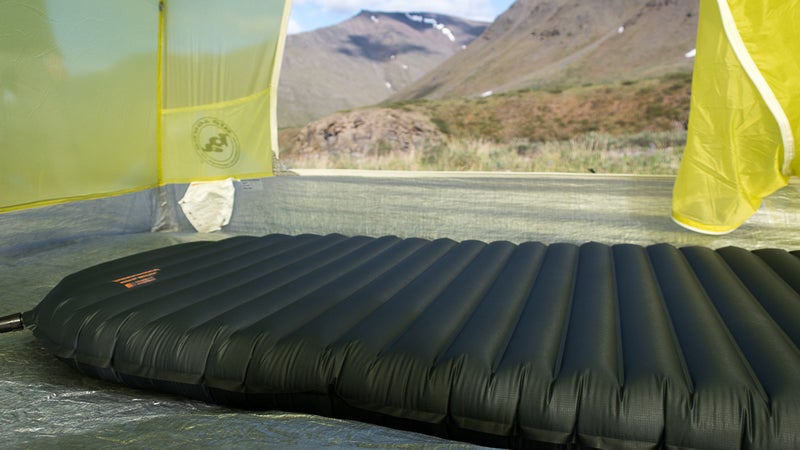
Noise
Unlike the XLite, Mylar film isnÔÇÖt used in the construction of the UberLite. That means itÔÇÖs less warm┬ábut also┬áless crinkly. Sleeping on the XLite has rightly been compared to sleeping on a bag of potato chips.
The UberLite is quieter than the XLite, but itÔÇÖs not absolutely quiet. The┬áfabrics are crispy┬áand can replicate the sound of balloons being rubbed together when laid atop some shelter-floor fabrics.
My experience with the XLite, XTherm, AXL, and now UberLite is that these pads make less noise with age and when paired with older shelter floors. Repeated folding of the pad seems to soften the materials, and normal use seems to buff the fabric coatings.
Warmth
The insulating properties of a sleeping pad are quantified by the R-value, which measures how well something resists conductive heat transfer. The higher the number, the warmer the pad. The UberLite has an R-value of 2.0. Anecdotally and quantitatively, itÔÇÖs not as warm as the XLite, which has an R-value of 3.2. The UberLiteÔÇÖs┬áoptimal temperature range feels close to the Insulated AXL Air, whose┬áR-value is not publicly known.
The lowest temperature I experienced with the UberLite was 30 degrees. I was extraordinarily comfortable, but context matters here: I was sleeping on a soft bed of Arctic tundra and on my backpack, which were complementing the UberLiteÔÇÖs warmth. More often, nighttime temperatures during my testing were in the forties; I slept on gravel bars, pine needles, mineral sand, granite slabs, and plain old dirt. In general┬áIÔÇÖm very adept at finding campsites that are inherently warmÔÇöitÔÇÖs rare that I sleep on cold, damp, hard-packed ground. So your mileage may vary.
The coldest I ever got with the UberLite was in West Virginia, when I was camping in a bridge hammock atop a windy ridge with temperatures in the low thirties. By 2 A.M. I was too cold to sleep, so I dropped the hammock to the spruce-needle-covered ground, which was a much warmer arrangement.
Overall, I would describe the UberLite as a true three-season pad. In the Mountain West, that means June through mid-September. In the Eastern woodlands and desert Southwest, you can add one to two months on both sides. Undoubtedly, the UberLite is a less capable pad than the XLite, which I unhesitatingly pack for hunting trips in the Colorado Rockies in November and early-season backpacking trips in May, when I might have to sleep on snow.
Durability
My UberLite has not yet developed any holes or bulges. I wouldnÔÇÖt expect the latter, since delamination of the internal tubes is a very long-term issue. To avoid the former, IÔÇÖm careful with itÔÇöevery night I protect the UberLite with a tent floor or bivy sack, a plastic pack liner, and my backpack.
But donÔÇÖt be mistaken: the UberLite is a delicate pad. Keep it away from sharp rocks, thorns, and needles. DonÔÇÖt use it as a sitting pad during rest breaks or around the campfire. And keep it inside a stuffsack when itÔÇÖs in your pack.
I also donÔÇÖt store the UberLite (or any other pad) in the same way that it arrives from the factory. Instead of folding it in thirds and then rolling it, I roll up the pad┬áfull width┬áand then fold it in half. This technique avoids sharp creases in the fabrics, which I think improves long-term durability, and itÔÇÖs faster and less fussy.
If you read through reviews of the UberLite, youÔÇÖll see quite a few comments to the effect of, ÔÇťIt developed a hole on the second night, and I returned it.ÔÇŁ I get the sense that there are (or were) lemons being produced, and IÔÇÖd advise you to test out your UberLite before you rely on it; you can do this by┬áinflating it at home, weighting it with something, and making sure that it holds air for a few days.
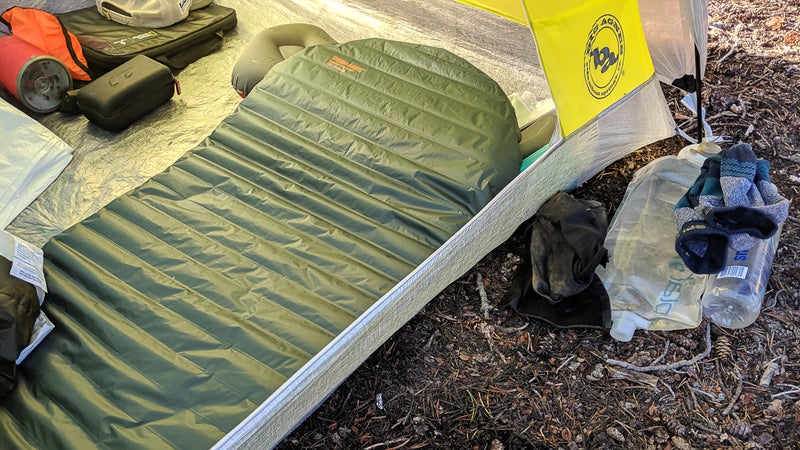
Inflation and Deflation
The UberLite retains the tried-and-true stick valve that Therm-a-Rest has been using since at least the early 2000s. The valve restricts the rate of inflation and deflation, but I donÔÇÖt mind: my respiratory system, not the valve, is the limitation during inflation.┬áAnd deflation is acceptably quick if I release it while still lying on the pad. Recently, I timed this processÔÇöit took 60 seconds from opening the valve to putting it inside a stuffsack.
How It Compares
How does the UberLite stack up against other popular sleeping pads?
Therm-a-Rest UberLite Versus Therm-a-Rest XLite
Compared to the ($185, 12 ounces), the UberLite is:
- 3.2 ounces lighter and $10 more expensive
- just as comfortable but less noisy
- less abrasion- and puncture-resistant
Therm-a-Rest UberLite Versus Big Agnes Insulated AXL Air
Compared to the Big Agnes Insulated AXL Air ($180, 10.6 ounces), the UberLite is:
- 1.8 ounces lighter and equally expensive
- less comfortable: itÔÇÖs thinner and lacks oversize┬áouter tubes
- similar in warmth
- comparable in durability
Therm-a-Rest UberLite Versus Klymit Static V Ultralite SL
Compared to the ($120, 12 ounces), the UberLite is:
- 3.1 ounces lighter
- $75 more expensive
- warmer
- less suitable for rolling sleepers
